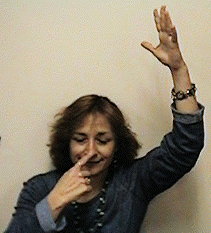 Proprioception is the sense we have of our own body without having to see ourselves. Proprioceptors are sensory receptors that relay information to the brain about our body’s position. The brain analyzes the information providing an awareness of where the body is in space.
Proprioception is the sense we have of our own body without having to see ourselves. Proprioceptors are sensory receptors that relay information to the brain about our body’s position. The brain analyzes the information providing an awareness of where the body is in space.
Proprioception and the proprioceptors that facilitate proprioception allow us to do things without seeing everything we do. Looking at the computer and putting food in your mouth at the same time is a simple example of proprioception. Without proprioception we would have to watch the food into our mouth with each bite.
There are many proprioceptors in the human body but there are three connected with the musculoskeletal system. These proprioceptors are the muscle spindle, the golgi tendon organ and the pacinian corpuscle. Understanding the relationship between the muscle spindle and the golgi tendon organ seems key to unlocking the mystery of tight muscles.
- The pacinian corpuscle—is a pressure sensor responsible for detecting changes in movement and force within the body.
- The muscle spindle— is a stretch receptor that tells the brain how much a given muscle can stretch.
- The golgi tendon organ—lives in the area where the muscle and tendon join and is a stretch inhibitor. It tells the brain to slow down because a given muscle doesn’t have the ability to stretch.
I think there are a lot of tight muscles out there that won’t let go and stretch a little because of stubborn golgi tendon organs. One of my favorite exercises, block lunges, is all about tricking the golgi tendon organs into letting the quadriceps muscle release tension and stretch more.
***
